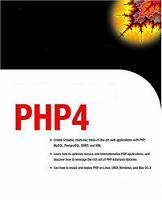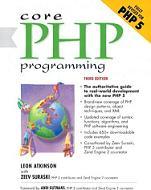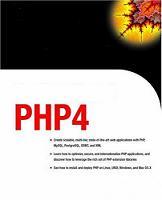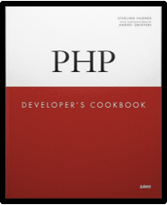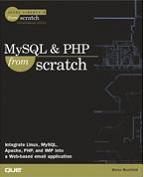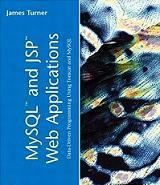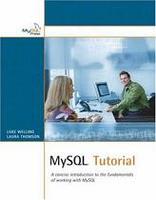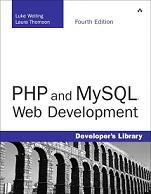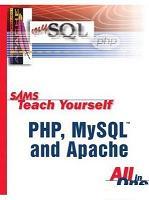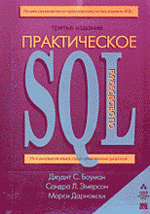PHP and PostgreSQL are free open-source products that are ideally suited for creating sophisticated Web applications and services. PHP is an efficient and easy-to-learn programming language that is used on an estimated seven million Web domains. PostgreSQL is considered to be the most advanced open-source relational database management system. It competes with costly commercial products such as Oracle and IBM's DB2.
PHP and PostgreSQL Advanced Web Programming is aimed at developers and programmers with basic knowledge of databases and Web scripting languages who want to develop powerful, secure, and inexpensive Web applications for themselves and their clients. Beginning with the necessary instructions for installing and setting up PHP and PostgreSQL, this book quickly covers the basic features of PHP and PostgreSQL before moving into in-depth coverage of using PHP and PostgreSQL in tandem and related topics.
Beyond the coverage of just syntax and function, this book provides a complete picture of developing Web applications and services using PHP and PostgreSQL. This includes practical discussions on performance tuning, security, session management, regular expressions, and much more.
Authors: Ewald Geschwinde, Hans-Jurgen Schonig
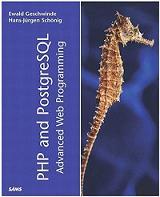
Copyright
About the Authors
Ewald Geschwinde
Hans-Jurgen Schonig
Acknowledgments
Tell Us What You Think!
Reader Services
Introduction
Why You Should Read This Book
Finally
Part I. Getting Started
Chapter 1. Getting Started
Section 1.1. Why Use PHP and PostgreSQL as a Team?
Section 1.2. What You Can Do with PHP and PostgreSQL
Section 1.3. Web Sites Built on PHP and PostgreSQL
Section 1.4. Summary
Chapter 2. Setting Up PHP
Section 2.1. About PHP
Section 2.2. Installing Apache with PHP from Source
Section 2.3. Installing Binaries on Linux
Section 2.4. Configuring PHP
Section 2.5. Summary
Chapter 3. PHP Basics
Section 3.1. Getting Started
Section 3.2. Control Structures and Operators
Section 3.3. Data Types and Functions
Section 3.4. Building Functions
Section 3.5. Exception Handling
Section 3.6. Working with Files
Section 3.7. Variables and Scope
Section 3.8. Building Packages
Section 3.9. Working with Forms
Section 3.10. Debugging PHP
Section 3.11. Summary
Chapter 4. Object-Oriented PHP
Section 4.1. The Concepts of Object Orientation
Section 4.2. Building Classes
Section 4.3. Working with Inheritance
Section 4.4. Summary
Part II. Getting Started with PostgreSQL
Chapter 5. Relational and Object-Relational Database Concepts
Section 5.1. Normalization
Section 5.2. Basic Operations in the Relational Model
Section 5.3. PostgreSQL as an Object Relational Database
Section 5.4. Modeling Techniques
Section 5.5. Components of Relational Databases and Technical Terms
Section 5.6. Summary
Chapter 6. Installing PostgreSQL
Section 6.1. Installing PostgreSQL on Unix
Section 6.2. Installing PostgreSQL on Windows
Section 6.3. Creating and Removing Databases
Section 6.4. The User Interface
Section 6.5. The Architecture of PostgreSQL
Section 6.6. License
Section 6.7. Summary
Chapter 7. Basic SQL
Section 7.1. Data Types
Section 7.2. Building Tables
Section 7.3. Building Simple SQL Statements
Section 7.4. Updates and Deletes
Section 7.5. Writing Joins
Section 7.6. Aggregating Data
Section 7.7. Inserting Huge Amounts of Data
Section 7.8. Indexes
Section 7.9. Modifying Objects
Section 7.10. Mathematical Functions and Operators
Section 7.11. Summary
Chapter 8. Advanced SQL
Section 8.1. Advanced Data Types
Section 8.2. Working with Views
Section 8.3. Working with Subselects
Section 8.4. Working with Aliases and Self-Joins
Section 8.5. Object-Oriented SQL
Section 8.6. Transactions and Locking
Section 8.7. Constraints
Section 8.8. Basic Optimizations Using EXPLAIN
Section 8.9. Sophisticated Joins
Section 8.10. Working with Arrays
Section 8.11. Combining Queries and Ranges of Values
Section 8.12. Summary
Chapter 9. Embedded Languages
Section 9.1. Writing SQL Functions
Section 9.2. PL/pgSQL
Section 9.3. Writing Triggers
Section 9.4. Embedded Languages Versus PHP Functions
Section 9.5. Summary
Chapter 10. PostgreSQL Administration
Section 10.1. User Administration and User Rights
Section 10.2. Maintenance and Database Internals
Section 10.3. Configuring PostgreSQL
Section 10.4. Preparing the Database for the Web
Section 10.5. Summary
Part III. PHP/PostgreSQL Interaction
Chapter 11. Writing Database-Driven Applications
Section 11.1. Connecting to the Database
Section 11.2. Inserting and Retrieving Data
Section 11.3. Error Handling and Monitoring
Section 11.4. Handling Huge Amounts of Data
Section 11.5. Retrieving Objects from the Database
Section 11.6. Tracing a PostgreSQL Connection
Section 11.7. Locking
Section 11.8. PHP and Transactions
Section 11.9. Summary
Chapter 12. Working with BLOBs
Section 12.1. Working with PostgreSQL BLOBs Using SQL
Section 12.2. Working with PostgreSQL BLOBs Using PHP
Section 12.3. Managing File Uploads
Section 12.4. Storing Files as Toasted Text
Section 12.5. An Example of a Simple Image Management Tool
Section 12.6. Summary
Chapter 13. Working with Persistent Database Connections
Section 13.1. The Concept of Persistent Database Connections
Section 13.2. An Example
Section 13.3. Persistent Connections and Performance
Section 13.4. Dangers and Hardware Issues
Section 13.5. Summary
Part IV. Advanced Technologies
Chapter 14. Managing Regular Expressions
Section 14.1. Perl Style
Section 14.2. POSIX Style
Section 14.3. Regular Expressions and SQL
Section 14.4. Summary
Chapter 15. Session Management
Section 15.1. Managing Sessions with Cookies
Section 15.2. Session Management
Section 15.3. Summary
Chapter 16. Working with Dynamic Documents, Images, and Movies
Section 16.1. Creating Dynamic Images
Section 16.2. Using Geometric Data Types
Section 16.3. Creating Dynamic Flash Movies
Section 16.4. Generating PDF Files
Section 16.5. Summary
Chapter 17. Working with Dates and Time
Section 17.1. Dates and Time in SQL
Section 17.2. Dates and Time in PHP
Section 17.3. Summary
Chapter 18. Tuning
Section 18.1. Tuning PostgreSQL
Section 18.2. Tuning PHP
Section 18.3. Summary
Chapter 19. XML
Section 19.1. The Basic Concepts
Section 19.2. Building a Simple XML-Based Application
Section 19.3. XML and PostgreSQL
Section 19.4. Summary
Chapter 20. Security Issues
Section 20.1. Potential Threats
Section 20.2. Securing Your System
Section 20.3. User Authentication with Apache and PHP
Section 20.4. Summary
Part V. Practical Examples
Chapter 21. Web Applications
Section 21.1. Mail Systems
Section 21.2. Building a Web Shop
Section 21.3. Building a Content Management System
Section 21.4. Creating Stock Charts
Section 21.5. PHP for Application Servers
Section 21.6. Summary
Chapter 22. Extending PostgreSQL
Section 22.1. A User-Defined Data Type
Section 22.2. Building Substring Indexes
Section 22.3. Tolerant Search Algorithms
Section 22.4. Summary
Chapter 23. High-Availability Systems
Section 23.1. An Introduction to High Availability
Section 23.2. Building Failsafe Applications
Section 23.4. Summary
Part VI. Migration
Chapter 24. Migration
Section 24.1. Migrating from MySQL to PostgreSQL
Section 24.2. Migrating from Oracle to PostgreSQL
Section 24.3. Summary
Index
Бесплатно скачать электронную книгу в удобном формате, смотреть и читать:
Скачать книгу PHP and PostgreSQL, Advanced Web Programming - fileskachat.com, быстрое и бесплатное скачивание.
Скачать chm
Ниже можно купить эту книгу, если она есть в продаже, и похожие книги по лучшей цене со скидкой с доставкой по всей России.Купить книги
Скачать книгу PHP and PostgreSQL - Advanced Web Programming
Дата публикации:
Теги: программирование :: PHP :: обучение PHP :: PostgreSQL :: web programming :: Geschwinde :: Schonig :: postgreSQL interaction :: advanced technologies :: practical examples :: migration :: самоучитель по PHP :: самоучитель PHP :: обучение на примерах :: основы PHP :: PHP для начинающих :: язык программирования PHP :: программирование на PHP :: примеры программирования на PHP :: CGI-сценарии :: сервер Apache :: РНР-функции :: cookie :: сеансы :: FTP :: e-mail :: базы данных :: MySQL :: ООП :: Web-приложения :: строки :: массивы :: книга :: операторы :: скачать
Смотрите также учебники, книги и учебные материалы:
Следующие учебники и книги:
Предыдущие статьи:

